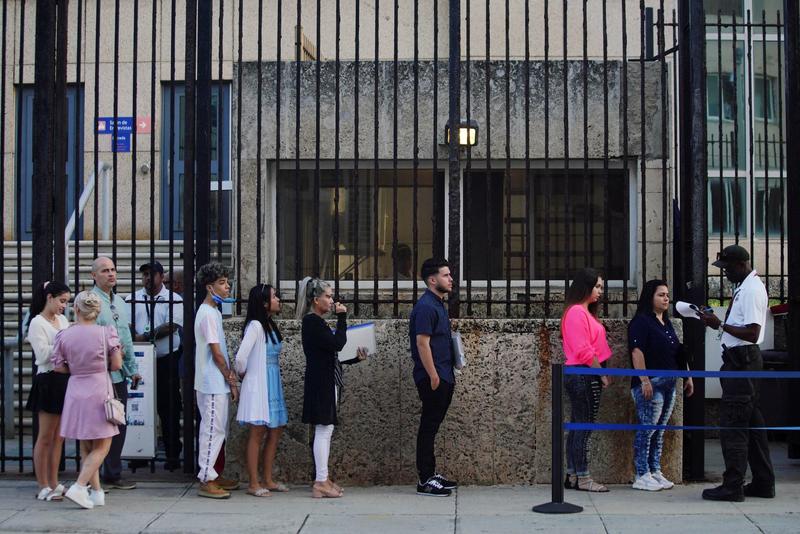 People wait in line to enter the US embassy in Havana, Cuba, Jan 4, 2023. (ALEXANDRE MENEGHINI / REUTERS)
People wait in line to enter the US embassy in Havana, Cuba, Jan 4, 2023. (ALEXANDRE MENEGHINI / REUTERS)
HAVANA – The US embassy in Havana resumed full immigrant visa processing and consular services for the first time since 2017 on Wednesday in a bid to stem the record-breaking flow of illegal migrants from Cuba north to the United States.
The embassy, which looms over Cuba's waterfront Malecon boulevard, slashed services in 2017 after several of its staff were stricken with a still largely unexplained ailment dubbed "Havana Syndrome". It was first reported among US officials in 2016 and symptoms included nausea and memory lapses.
READ MORE: Cuba rejects US report on diplomat health incidents
Cubans were instead required to travel to Guyana for visa processing, a costly trip well out of reach for most on the island. The US embassy in Havana began limited visa processing last year and in September announced the 2023 full reopening, to "ensure safe, legal, and orderly migration of Cubans", it said.
The US issued 20,000 immigrant visas to Cubans last y ear in line with previously signed migration accords, and has said it aims to do the same in 2023
At sunrise on Wednesday, dozens of Cubans, some who had waited years for appointments, assembled at a small park near the embassy, fidgeting with documents and chatting with family as they awaited instructions from embassy staff.
Barbara Nodas, 20, said she was waiting to pick up a visa that would reunite her with her father in Tampa, Florida, a process that had taken more than two years.
"The American dream of many people is coming true," she said, nearly in tears. "This is a long-awaited moment."
But Nodas, who traveled from eastern Cuba to pick up her visa, still ranks among the lucky few who will make the voyage north legally.
Washington last year issued 20,000 immigrant visas to Cubans, including a limited number out of Havana, in line with previously signed migration accords, and has said it aims to do the same in 2023.
Cuba and the US have also resumed once-regular talks on migration in a bid to tamp down the flow.
But a record-breaking 250,000 Cubans have nonetheless left the island in the past year for the US, most via dangerous, irregular routes, traveling overland from Central America north to the border or across the Straits of Florida in precarious homemade rafts.
ALSO READ: Drastic staff cuts at US Embassy in Cuba now permanent
Cuba blames the US embargo, a web of US laws and regulations that complicate business and financial transactions with the island, for crippling its economy and fueling illegal migration.
Widespread shortages of food, fuel, medicine and electricity – made worse by the coronavirus pandemic – have prompted scattered unrest on the island and sought many to seek alternatives abroad.


